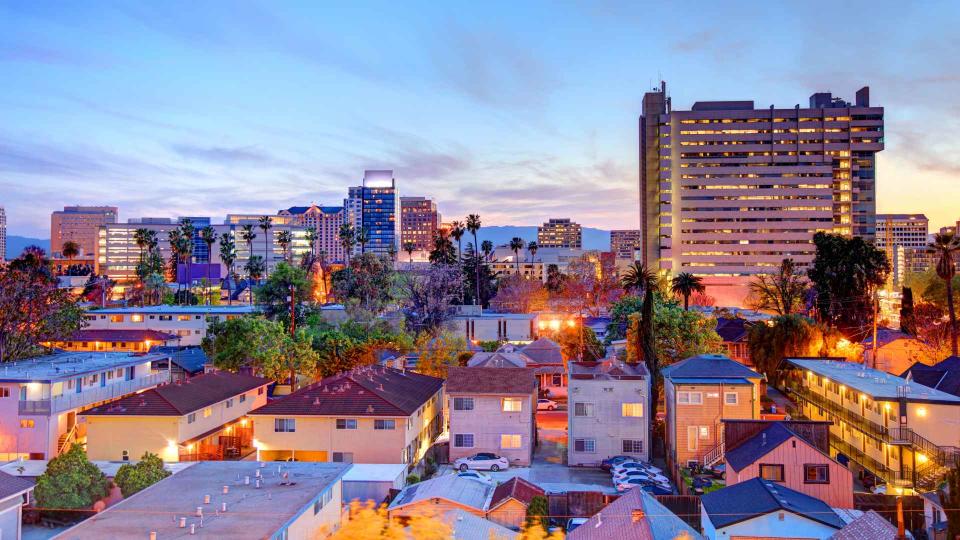Here’s How the Definition of Middle Class Has Changed in California

Whether it’s wanting to direct your feet to the sunny side of the country or just incorporating California dreaming into your retirement plan, if you find your finances being defined as “middle class” it’s good to know how far they will go.
In California, a state known for its booming economy, big industries, tech innovation, and sky-high living costs, this accepted definition of what constitutes the middle class has evolved dramatically over the past few decades.
Discover More: What the Upper Middle Class Makes in Different US Cities
Check Out: 6 Subtly Genius Moves All Wealthy People Make With Their Money
From shifts in income brackets to the changing cost of living, the middle class in California today looks significantly different than it did 30 or even 10 years ago.
GOBankingRates recently conducted a study to determine just what constitutes this classification in each state. Here are some key takeaways from California statistics:
2022 middle-class income range: $61,270 to $183,810
2012 middle-class income range: $40,933 to $122,800
10-year change in middle-class income: 49.68%
Historically, the middle class in the United States was defined by a combination of factors, including household income, job stability, education, and homeownership. Economists have typically considered households earning between two-thirds and double the national median income as middle class.
However, applying this metric to California paints a very different picture.
Earning passive income doesn't need to be difficult. You can start this week.
California’s Skyrocketing Cost of Living
California has consistently ranked among the most expensive states to live in, largely driven by high housing costs.
The state’s housing market, particularly in coastal cities like San Francisco, Los Angeles and San Diego, has pushed the cost of living well above the national average. This rise has reshaped what it means to be middle class in the Golden State.
GOBankingRates also did other research to discover how much you would need to save to comfortably retire in California, which is largely based on the general cost of living factors. Here are some stunning average statistics, especially when you compare them to a middle-class income:
Annual cost of living, including total cost of expenditures: $78,863.75
Annual cost of living minus social security income: $57,296.99
Minimum needed for 20 years of retirement: $1,145,940
Minimum needed for 25 years of retirement: $1,432,425
Minimum needed for 30 years of retirement: $1,720,630
Trending Now: How I Went From Middle Class to Upper Middle Class
Middle-Class Income vs. Your California Bills
Though housing is perhaps the most significant factor altering the definition of the middle class in California, what about just your day-to-day expenses or monthly bills?
When you add these all up, it is easy to see why the middle-class income may struggle to stretch as far as it used to when it comes to even just the bare necessities.
Here are some key findings for what you would spend on average for common expenditures:
Annual cost of housing: $22,530.48
Annual cost of groceries: $5,387.03
Annual cost of utilities: $5,201.81
Annual cost of transportation: $6,282.55
Annual cost of healthcare: $8,226.14
The California Wealth Gap
The widening gap between the wealthy and everyone else has also contributed to the shifting definition of the middle class in California.
The state is home to some of the nation’s richest millionaires and billionaires, yet many middle-class families are being priced out of urban centers, forced to move to more affordable areas or leave the state altogether.
The rise of the gig economy has added another layer of complexity. Many Californians who were once part of the stable middle class now work as independent contractors or freelancers, which can mean less job security, fewer benefits and unpredictable income streams.
This economic shift has made it more difficult for people to maintain the traditional middle-class lifestyle.
What Does the Future Hold for the Californian Middle Class?
As the cost of living continues to rise and economic inequality deepens, the future of the middle class in California remains murky at best.
Policymakers are grappling with how to address these issues, with proposals ranging from affordable housing initiatives to reforms in education and healthcare aimed at easing the financial burden on middle-income families.
However, without significant changes, the definition of middle class in California may continue to shift upwards, creating a scenario where even high-earning professionals struggle to maintain the traditional hallmarks of middle-class life.
Final Take To GO
The bottom line is that the definition of the middle class in California has undergone a seismic shift in recent years, driven by the rising cost of living for everything from food to rent. What once represented financial security and upward mobility now feels out of reach for many, with homeownership and savings becoming elusive financial goals.
As California continues to increase its price tags, so too does the shift of the the middle class to more affordable locations.
Methodology: For this piece, GOBankingRates first sourced the 2012, 2017 and 2022 household median income of every state, as sourced from the 2012, 2017 and 2022 American Community Surveys as conducted by the U.S. Census Bureau. With these median household incomes isolated, GOBankingRates was able to find middle-class income ranges for each respective year with the following definition: those with an annual household income that was two-thirds to double the national median income. For each state, GOBaningRates found 2022 middle-class income range, 2017 middle-class income range, 2012 middle-class income range, 10-year change in middle-class income range, and 10-year percent change in middle-class income. All data was collected and up to date as of Apr. 8, 2024.
More From GOBankingRates
This article originally appeared on GOBankingRates.com: Here’s How the Definition of Middle Class Has Changed in California